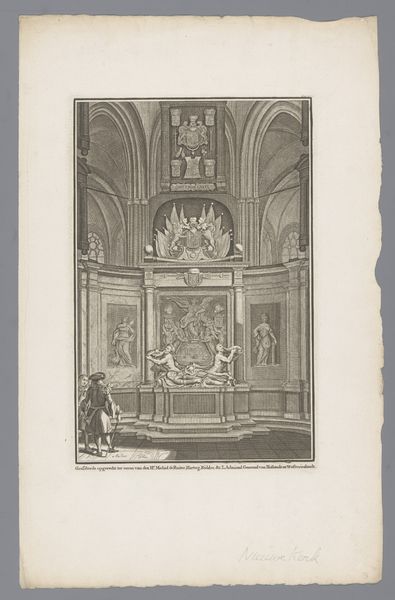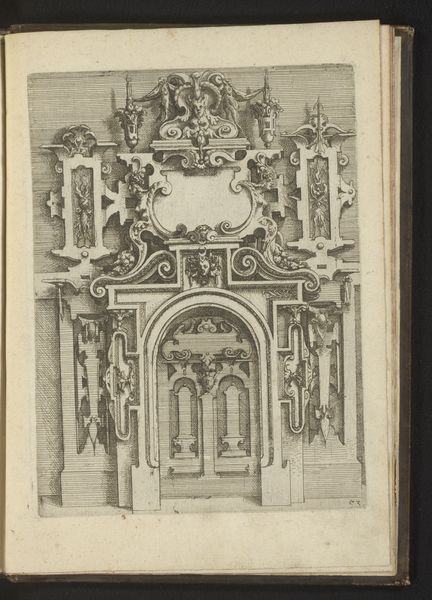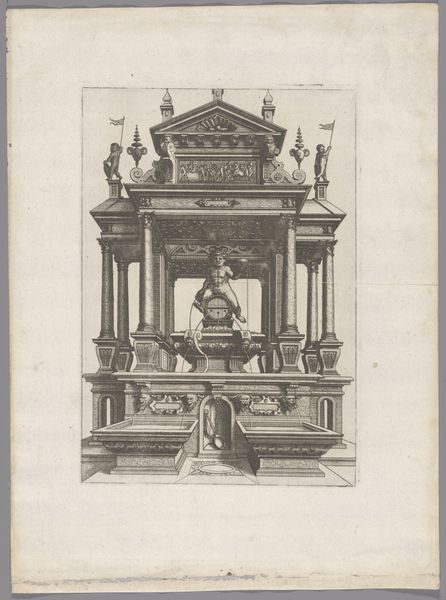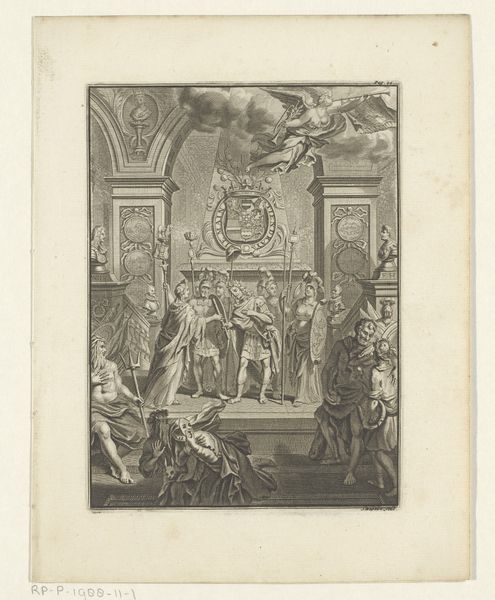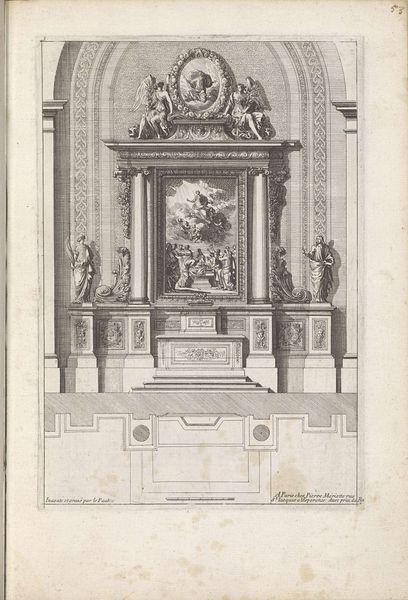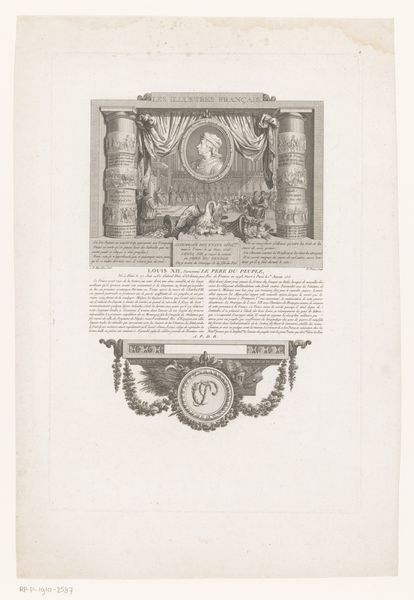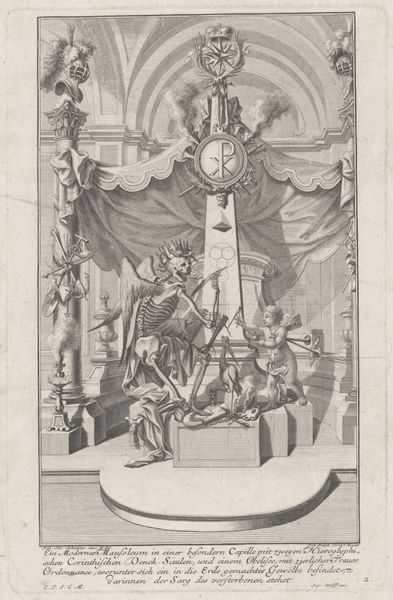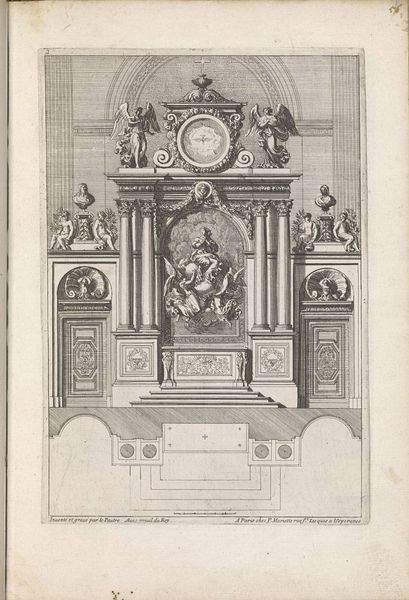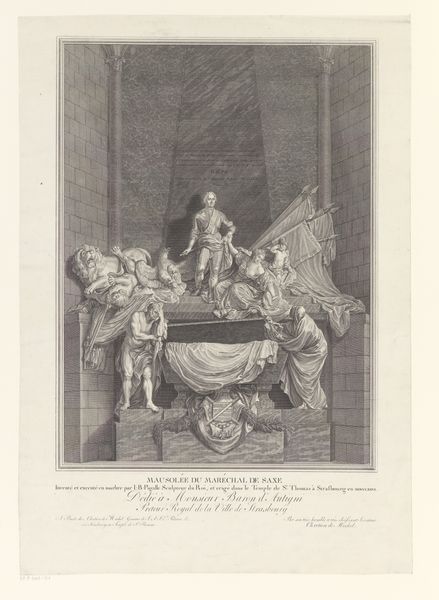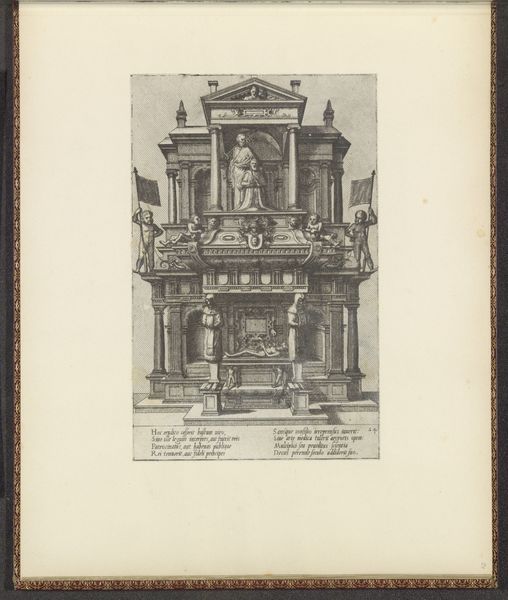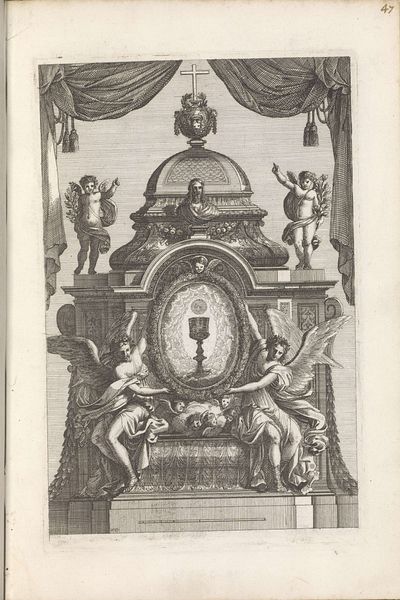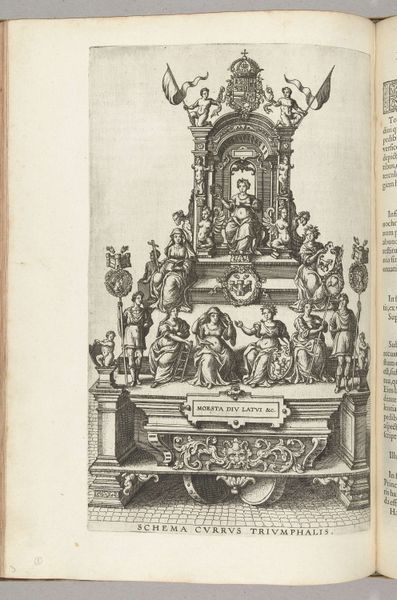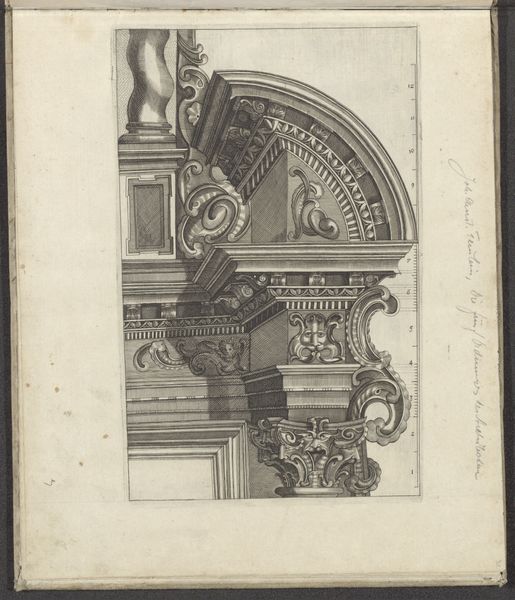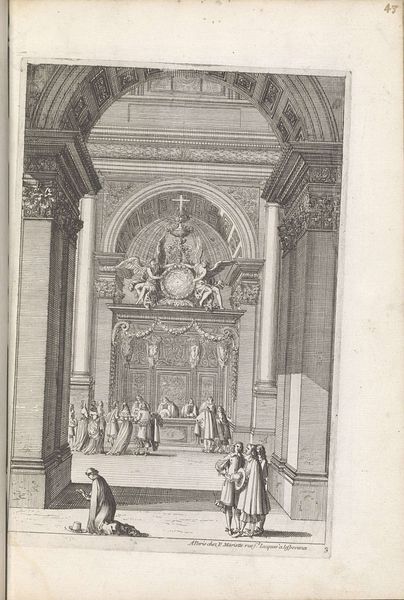
Cathedra Petri in de Sint-Pietersbasiliek te Vaticaanstad 1665 - 1667
0:00
0:00
print, paper, engraving, architecture
#
baroque
# print
#
paper
#
line
#
cityscape
#
history-painting
#
engraving
#
architecture
Dimensions: height 290 mm, width 187 mm
Copyright: Rijks Museum: Open Domain
Editor: Here we have Giovanni Francesco Venturini’s “Cathedra Petri in de Sint-Pietersbasiliek te Vaticaanstad,” made between 1665 and 1667. It’s a baroque engraving on paper, and I’m struck by the almost overwhelming detail in this depiction of the basilica. What do you make of this work? Curator: The intensity of detail speaks to a specific moment in printmaking and its function. Engravings like these were instrumental in disseminating architectural designs and affirming papal power. Notice how the meticulous labor involved mirrors the effort required to construct the actual basilica. It’s not just a representation, it's a manufactured artifact mimicking another. Editor: That's a really interesting point. The engraving as a kind of echo of the building itself through the labor involved... Did the Baroque style influence the production, maybe pushing for this incredible level of detail to impress viewers? Curator: Absolutely. The Baroque aimed for grandeur and spectacle, which required immense resources, both material and human. Consider the paper itself – its production was tied to specific economic structures and trade routes. And the engraver, Venturini, his skill was a commodity. The line becomes almost performative of wealth. How does that thought sit with you? Editor: It makes me think about who could even afford this print. It was likely a luxury item, consumed by a specific elite class...almost like a miniature monument mirroring the grand basilica but made accessible to the wealthy through consumption. It’s quite different from a photograph in our time that anybody can own. Curator: Exactly! It blurs the lines between art, craft, and industry. The materiality and process tell us just as much about power structures as the image itself. We see consumption shaping not just access to, but the very means and forms of production itself. Editor: So it goes beyond just seeing the basilica, but really understanding the complex systems that went into making both the building and its representation. Thanks, I hadn't considered it that way! Curator: A fresh perspective can be valuable. Art like this becomes more vibrant when considering both artistic representation and the structures upholding that art form.
Comments
No comments
Be the first to comment and join the conversation on the ultimate creative platform.
